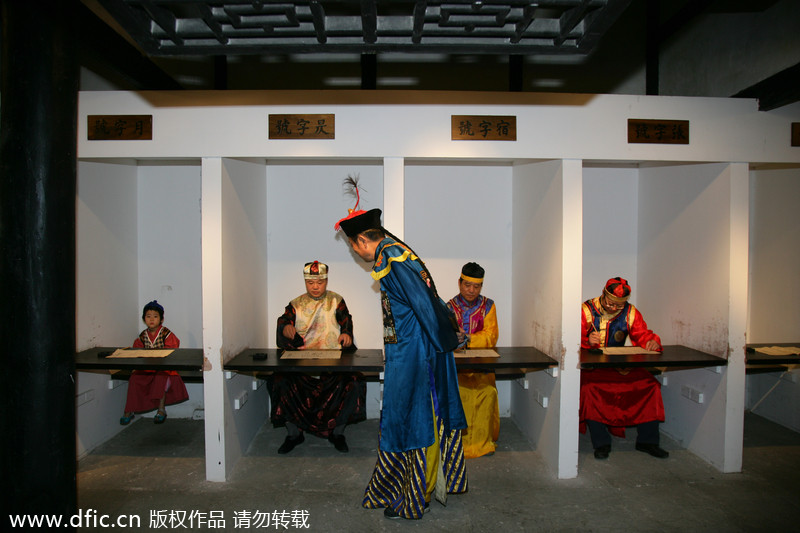 |
|
The photo shows a model of an examination hall for the keju exam in ancient China. [Photo/IC] |
How was the exam graded?
Different titles were awarded to people at various levels of the exam - with special titles for those who performed particularly well. People who passed the county level examination were called xiucai (or shengyuan). Those who passed the provincial, academy and palace examinations were called Juren, Gongshi and Jinshi, respectively.
The top three Jinshi were called Zhuangyuan, Bangyan and Tanhua. All the Jinshi would be given a post by the emperor.
It was considered a great honor, for an individual and his family, to be selected for an official government position at any level after passing the imperial examination.
Competition between imperial examination candidates was extremely tough. Sometimes, two to three million people were tested twice a year at the local level - and only about 150,000 would progress to the provincial level examination. About 6,000 would then take the capital level examination.
The most coveted title was Zhuangyuan - so the ancient scholars who were named Zhuangyuan were considered to be genuinely talented intellectuals, and the emperors wanted their daughters to marry a Zhuangyuan.